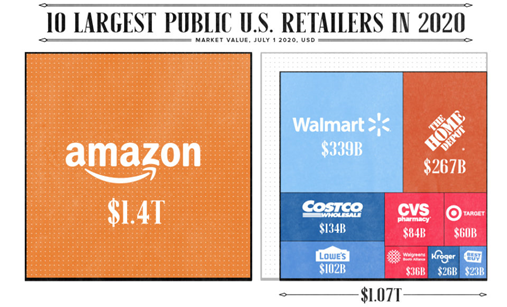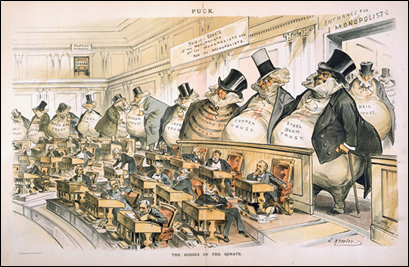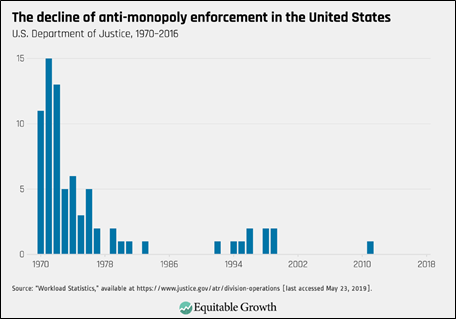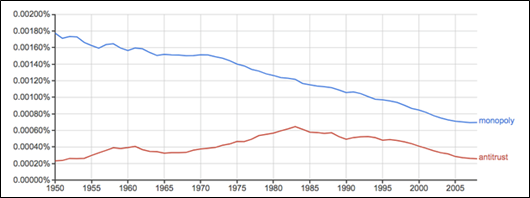INTRODUCTION
In early 1997, a young entrepreneur was invited to a Harvard Business School class to talk about his online bookstore. But the MBA students were quite skeptical about the startup’s long-term prospects, especially “in the wave of established retailers moving online during that time.”1 One HBS student even advised the entrepreneur, “you seem like a really nice guy, so don’t take this the wrong way, but you really need to sell to Barnes & Noble and get out now.”2
Of course, that entrepreneur was none other than Jeff Bezos talking about his little-known startup called Amazon. One would be hard-pressed to find anyone willing to make a similar recommendation to Bezos today. Despite not making any profit for a long time and shareholders worrying that the company would not surve in the long-term, Amazon has now effectively expanded to become an online retailer with a presence in nearly every major category: it is the “leading provider of cloud-computing services, a gadget maker, a major entertainment player and a rival to United Parcel Service Inc. and FedEx Corp.”3 Amazon’s company valuation has surpassed the $1 trillion dollar mark and Bezos is comfortably one of the richest people in the world.

Figure 1: Visualizing the Size of Amazon (Source: Visual Capitalist)
While supporters of Amazon would point to Bezos’ “obsession [with growing] fast” and strategic investments, critics may point out that Amazon’s “competitive zeal looks like unfair practices,” including “[using] data about independent sellers on its platform to develop competing products” and utilizing their “investment and deal-making process… to develop products that competed with its would-be partners.”4 This is problematic because Amazon’s size and power essentially lets it operate as a gatekeeper for e-commerce and stifle competitors and competing products. According to Jeremy Levine, a partner at venture capital firm Bessemer Venture Partners, Amazon is “using market forces in a really Machiavellian way… It’s like they are not in any way, shape or form the proverbial wolf in sheep’s clothing. They are a wolf in wolf’s clothing.”5
“It’s like they are not in any way, shape or form the proverbial wolf in sheep’s clothing. They are a wolf in wolf’s clothing.”
Troublingly, Amazon is not the only company that exhibits this type of anticompetitive behavior. Other tech companies like Google and Facebook have also leveraged their market power to stifle competition and consolidate their power and wealth. For example, Yelp discovered that Google was “taking Yelp’s reviews and using them in Google products that competed with Yelp.”6 But when they raised these concerns, Google responded that it was simply displaying information from the search results and that Yelp could choose to withhold their content. But for Jeremy Stoppelman, the CEO of Yelp, this was a “false choice” because Google’s large market share made it impossible to withhold content from Google’s search results. Meanwhile, Facebook has consistently cloned its competitors – e.g., launching Instagram Stories in response to Snapchat – and leveraged their market power in acquiring companies like WhatsApp and Instagram when they were both nascent challengers.
The obvious question that many people have been asking recently is why policymakers and regulators have not taken any substantial action against these tech companies. After all, federal antitrust laws like the Sherman Act, the Federal Trade Commission (FTC) Act, the Clayton Act, and the Robinson-Patman Act exist to regulate the conduct of corporations and are intended to promote competition in the marketplace. At the federal level, the Department of Justice (DOJ) Antitrust Division has exclusive jurisdiction over American criminal antitrust prosecutions, and shares jurisdiction with the FTC with regards to civil antitrust enforcement. And yet, these regulatory agencies have either been unable to find anything wrong with recent acquisitions by big tech companies (e.g., the Facebook acquisition of Instagram & WhatsApp) and/or unwilling to act. In his book “The Curse of Bigness”, Professor Tim Wu points out that because of unchallenged acquisitions, “the tech industry became essentially composed of just a few giant trusts: Google for search and related industries, Facebook for social media, Amazon for online commerce. While competitors remained in the wings, their positions became marginalized with every passing day.”7
“[The] tech industry became essentially composed of just a few giant trusts: Google for search and related industries, Facebook for social media, Amazon for online commerce. While competitors remained in the wings, their positions became marginalized with every passing day.”
This simply crystalizes the trend of the decline in antitrust enforcement in the United States. In fact, since the 1970s, “the range of conduct that would be condemned by courts as anticompetitive has decreased significantly, and the evidence required to prove any particular anticompetitive harm has increased appreciably, resulting in much more freedom for business to seek profit through anticompetitive means.”8
HOW DID WE GET HERE?
Brief Overview of Antitrust Law
It may seem hard to believe now but antitrust law and enforcement was once viewed as an essential tool to regulate competition in the economy. Back in the 1800s, there were several giant businesses known as “trusts” that controlled whole sections of the economy, like railroads, oil, steel, and sugar. As these trusts essentially controlled entire industries, they enjoyed monopoly power and were able to increase prices at the expense of consumers’ interests. Consequently, these businessmen became very wealthy and powerful and leveraged their power to influence policies and regulations. But eventually the voters had enough and Congress passed the first antitrust law, the Sherman Act in 1890, which prohibited “activities that restrict interstate commerce and competition in the marketplace.”9 As Senator John Sherman put it, “if we will not endure a king as a political power, we should not endure a king over the production, transporation, and sale of any of the necessaries of life.”10

Figure 2: The Bosses of the Senate (Source: United States Senate)
After the passage of the Sherman Act, government officials prioritized passage of antitrust laws – such as the Clayton Act and the FTC Act in 1914 – and effective enforcement of such laws to regulate the conduct of corporations and promote competition in the marketplace. For reference, President Theodore Roosevelt filed forty-five antitrust cases and his successor William Taft pursued sventy-five cases. Consequently, this shift in mindset towards trusts led to the breakup of the Northern Securities Company, the largest railroad monopoly (Northern Securities Co. v. United States (1904)) and Standard Oil Company, the largest oil and refinery company (Standard Oil Co. of New Jersey v. United States (1911)). For President Roosevelt, it was “imperative to teach the masters of the biggest corporations in the land that they were not, and would not be permitted to regard themselves as, above the law.”11 Until the 1970s, “antitrust came to represent the Magna Carta of free enterprise – it was seen as the key to preserving economic and political freedom.”12
“Antitrust came to represent the Magna Carta of free enterprise – it was seen as the key to preserving economic and political freedom.”
So how did we transition from a period where “the antitrust laws and anti-concentration mandate were broadly accepted as part of a functioning democracy”13 to the current regime that fails to take action against what appears to be blatant anticompetitive behavior? Surprisingly, this trend reflecting the lack of antitrust enforcement may perhaps be traced to a court case having to do with the manufacturers of frozen dessert pies.
Utah Pie Co. v. Continental Baking Co. (1967)
Utah Pie Co. v. Continental Baking Co. (1967) concerned a dispute between competing manufacturers of frozen dessert pies in the Salt Lake City market. Utah Pie Company was a small, family-owned company while Continental Baking Company was a large, national company. Due to their locational advantage, Utah Pie initially controlled 66.5% of the Salt Lake City market. In order to gain market share, Continental “began selling at below-cost prices in Salt Lake City, while keeping prices in other regions at or above cost.”14 Consequently, Utah Pie’s market share dropped to 45.3%. Interestingly, despite the decline in market share, Utah Pie’s overall sales volume steadily increased. However, they were still displeased by Continental’s actions, so Utah Pie brought a predatory pricing case under the Robinson-Patman Act which prohibits price discrimination.
The Court of Appeals concluded that Continental’s conduct “had only minimal effect, that it had not injured or weakend Utah Pie as a competitor, that it had not substantially lessened competition, and that there was no reasonable possibility that it would do so in the future.”15 However, the Supreme Court reversed the Court of Appeals and ruled in favor of Utah Pie. The Supreme Court noted that “the pricing strategies of its competitors had diverted business from Utah Pie and compelled the company to further lower its prices, leading to a declining price structure overall.”16 In other words, a competitor who is forced to “reduce his price to a new all-time low in a market of declining prices will, in time feel, the financial pinch, and will be a less effective competitive force.”17
This Supreme Court decision was controversial as “penalizing conduct that had made a market more competitive as predatory seemed perverse.”18 In his dissent, Justice Stewart even noted, “I cannot hold that Utah Pie’s monopolistic position was protected by the federal antitrust laws from effective price competition.”19 This decision also drew criticism from various scholars, including Robert Bork, who described predatory pricing as “a phenomenon that probably does not exist” and the Robinson-Patman Act as the “misshapen progeny of intolerable draftsmanship coupled to wholly mistaken economic theory.”20
The Influence of the Chicago School
Consumer Welfare
These group of scholars, like Bork, were part of the emerging Chicago school of antitrust trust that believed in the idea of “consumer welfare” and that antitrust law was intended only to lower prices for consumers. This is in contrast to the traditional approach to antitrust law, which is limiting concentrations of market power. The Chicago school argued that “such large firms may have gained their dominant market positions through efficiency advantages that provide greater benefits to consumers than a market forced by the law to include many smaller firms.”21
However, Bork extended this thinking by arguing that this principle does not represent what “the law should do, but that it had been, all along, the actual intent of the laws.”22 In his 1966 paper, “Legislative Intent and the Policy of the Sherman Act”, Bork argued that Congress intended to promote the principle of consumer welfare: “To put it another way, the policy the courts were intended to apply is the maximization of wealth or consumer…satisfaction.”23 In other words, Bork was arguing that it was “not enough for companies to possess significant power; regulators and judges had to prove through economic analysis that consumers were harmed through higher prices.”24
Despite no real evidence that Congress intended to promote the concept of “consumer welfare” with the passage of the Sherman Act – Professor Wu points out that “no other scholar ever managed to find what Bork did in the Congressional record” – this principle gained much traction and influenced Supreme Court doctrine for decades. Chief Justice Burger even cited Bork’s The Antitrust Paradox in a 1979 Supreme Court case, writing that “Congress designed the Sherman Act as a consumer welfare prescription.”25 The consumer welfare standard eventually gained mainstream acceptance and led to fewer antitrust enforcement.

Figure 3: Decline of Enforcement in the United States (Source: Yale School of Management)
Vertical Mergers
In addition to promoting the principle of consumer welfare, the Chicago school also influenced the analysis and interpretation of vertical integration. Vertical integration refers to the integration of two or more companies that provide different supply chain functions for a common good or service. Companies typically seek out vertical integration because then the business would own all parts within the same production “vertical” (e.g., an upstream manufacturer and a downstream distributor), allowing for reduction of production costs and increase in profit margins. Traditionally, vertical integration is subject to the provisions in the Clayton Act and it was banned whenever it threatened to “substantially lessen competition” or constituted a “restraint of trade” or an “unfair method of competition.”26
However, the Chicago school of antitrust challenged this premise and argued that vertical integration is pro-competitive because it “generated efficiencies that antitrust law should promote. And if integration failed to yield efficiencies, then the integrated firm would have no cost advantages over unintegrated rivals, therefore posing no risk of impeding entry.”27 In essence, this promotes the argument that only horizontal mergers affect competition as “horizontal mergers increase market share, but vertical mergers do not.”28
Just like the principle of consumer welfare gained mainstream traction, the Chicago school’s view of vertical integration also gained many supporters. When Ronald Reagan became president, this view of vertical integration would become national policy as the DOJ and the FTC “issued new merger guidelines outlining the framework that officials would use when reviewing horizontal deals.”29 These guidelines actually “narrowed the circumstances in which the agencies would challenge vertical mergers” and during the Reagan administration, regulatory agencies “did not challenge even one vertical merger.”30
The Capture of Antitrust Law
It is important to note that the Chicago school of antitrust did not pop out of nowhere. During this time period, there were various forces that were working behind the scenes to promote this laissez-faire approach towards antitrust. By the 1970s, antitrust law had been co-opted by corporations and scholars like Bork were simply carrying out the corporate interests.
Academic capture
As Professor Robert Van Horn put it, “from the time of its birth in 1946, there has been a dynamic, mutually beneficial relationship between the Chicago law and economics movement and corporations.”31 Corporations would provide much needed funding to the University of Chicago and the Chicago school would champion a “free market economy” by giving birth to neoliberal ideas and “challenged the status quo antitrust positions of many government officials and economists that undermined corporate power.”32
Despite once advocating for curbing corporate power and vigorously enforcing antitrust law, Aaron Director, one of the founders of the Chicago School of Law and Economics, would end up leading the Free Market Study (also known as the “Hayek Project” and view “antitrust law as a centerpiece of the investigation of the legal foundations of capitalism.”33 Director would end up influencing various students and colleagues like Robert Bork, Richard Posner, and Frank Easterbrook, all of whom became federal judges. With some strategic investments under the guide of supporting academics, corporations and corporate interests had effectively captured academics who would promote the “presumption that antitrust was unnecessary, based on the laissez-faire idea that problems work themselves out, and most of the time we live in the best of all possible worlds.”34
Political capture
Corporations were also laying the groundwork for influencing public discourse around antitrust policy and enforcement. In a climate of inflation and corporate failures, Chicago school academics were arguing that “government rules, labor power, and antitrust policies were scaring businessmen into not investing.”35 They were reinforcing the conclusion that “regulation was often harmful”36 and that the market should look to maximize profits and the interests of shareholders.
But members of the Democratic Party were also promoting similar arguments and arguing that anti-monopoly measures were ineffective. In his book The Zero-Sum Society, Lester Thurow argued that “anti-monopoly policy, especially in the face of corporate problems was anachronistic and harmful. Thurow essentially reframed Bork’s ideas for a Democratic audience.”37 As perhaps a sign of things to come, “the 1975 class of Democrats categorically realigned American politics, ridding their party of its traditional commitments. They released monopoly power by relaxing antitrust laws, eliminating rules against financial concentration, and lifting price regulations. Indeed, this time period saw a dramatic shift in political discourse from “protecting citizen sovereignty to maximizing consumer welfare.”38

Figure 4: The Frequency of the Words Monopoly and Antitrust in Published Books, 1950-2008 (Source: The Atlantic)
Legacy of the Chicago School
The academic & political capture of antitrust law eventually evolved into capture of government enforcement. More and more attorneys at the DOJ and the FTC adopted the consumer welfare line of thinking and took a more relaxed approach to antitrust. As seen in Figure 3 above, there has been a precipitous decline in anti-monopoly enforcement since the 1970s. Additionally, Bork served as Solicitor General of the United States, giving him a “prime platform to influence the Supreme Court on antitrust issues and enabled him to train and influence many of the attorneys who would argue before the Supreme Court for the next generation.”39
To date, the Chicago school’s ideas around antitrust remains the dominant approach. The Clinton administration “stripped antitrust out of the Democratic platform,” representing the “first time a reference to monopoly power was not in the platform since 1880” and and we have seen the Obama administration take a hands-off approach when reviewing the proposed Comcast/NBC and Ticketmaster/LiveNation mergers. In fact, despite strong opposition and warnings that these mergers would lead to an anticompetitive market, the DOJ ultimately approved both deals. Because the Chicago school’s premises had become widely accepted, “those demanding a return to [antitrust] law’s traditions of trustbusting and breakups were cast as wild-eyed radicals in an [Obama] administration that favored moderation and composure.”40
WHY DOES THIS MATTER?
Certainly there are other factors at play but the ascendance of the Chicago school of antitrust has helped lead to the “age of oligopoly” where we have “levels of industry concentration arguably unseen since the original Trust era.”41 A paper by Gustavo Grullon from Rice University found that “a full 75% of US industries witnessed increased concentration” despite no evidence of a “significant increase in operational efficiency, which suggests that market power is becoming an important source of value.”42 Some examples of affected industries include (but not limited to): finance, media, airlines, telecommunications, pharmaceuticals, etc. There’s been a dramatic decrease in the listing of US publicly traded firms as there are now a smaller number of firms and industries that control a greater share of global wealth and power.
Perhaps this is most prevalent when considering the rise of these big tech companies like Amazon and Facebook and Google. These tech companies were able to grow rapidly by acquiring nascent challengers without much fear of regulation: Facebook was able to acquire competitors like Instagram and WhatsApp; Google was able to acquire competitors like YouTube and Waze; Amazon was able to acquire competitors like Zappos, Diapers.com, and Whole Foods. This type of activity and consolidation of power might not have been possible without the Chicago school of antitrust promoting the idea of “consumer welfare” and loosening scrutiny on vertical integration.

Figure 5: Big Tech Companies’ Acquisitions (Source: GrowthRocks)
This trend has certainly not been helped by the venture capital (VC) industry which plays a crucial role in funding innovative startups. As these VCs are looking for enormous returns on their investments, they are motivated to contribute to market consolidation by encouraging startups to be acquired by a dominant tech company, like Amazon or Facebook or Google. Indeed, because “initial public offerings (IPOs) have become more expensive and time-consuming in recent decades, venture capitalists have shown a preference for realizing their investments through acquisitions rather than through public markets.”43
Essentially, antitrust enforcement, of the lack of, has been essentially captured by corporate interests and the push for shareholder primacy. Senior executives and management at these big tech companies engage in anticompetitive behavior as they work to secure higher profits and higher stock prices. And policymakers and regulators are afraid to act because of concerns that government interference in new technologies might kill the “golden goose.” The Obama administration in particular was very lax on tech regulation due to their deep ties to Silicon Valley – for example, Eric Schmidt had enjoyed virtual open-door access to the White House44 – and they didn’t want to harm the economic growth of companies like Facebook and Google.
Consequently, these tech companies have amassed so much influence and power that they are able to pick winners and losers throughout our economy: “they not only wield tremendous power, but they also abuse it by charging exorbitant fees, imposing oppressive contract terms, and extracting valuable data from the people and businesses that rely on them.”45 Simply put, these tech companies have wielded their dominance in “ways that erode entrepreneurship, degrade Americans’ privacy online, and undermine the vibrancy of the free and diverse press. The result is less innovation, fewer choices for consumers, and a weakened democracy.”46
“[T]hese firms wield their dominance in ways that erode entrepreneurship, degrade Americans’ privacy online, and undermine the vibrancy of the free and diverse press. The result is less innovation, fewer choices for consumers, and a weakened democracy.”
While it is true that there has been increased consolidation and concentration of power in other industries, the intersection of tech and antitrust is especially problematic because of the hold it has in our everyday lives. There are elements of deep capture at work where consumers are willing to overlook the problems with these tech companies by rationalizing that these platforms have led to lower prices and various efficiencies in their everyday lives. Furthermore, these tech companies have accumulated so much power and wealth in such a short period of time – to put things in perspective, four tech companies would be amongst the top 20 richest countries in the world – and they are spending more and more money47 on lobbying efforts to capture various institutions that would allow them to further consolidate their power and influence.
WHAT DO NEXT STEPS LOOK LIKE?
Current antitrust doctrine is ill-equipped to aggressively enforce antitrust action and existing antitrust laws need to be modernized for the digital age. Broadly speaking, policymakers should reverse the negative effects of the Chicago school of antitrust and implement reforms so that regulatory agencies are empowered to address the market power concerns raised by the consolidation of these big tech companies. Namely, courts and legislators should introduce reforms to: (1) promote fair competition in the digital markets; (2) strengthen laws relating to mergers and monopolization; and (3) restore vigorous oversight and enforcement of antitrust laws.48
This can be accomplished in a few ways. First off, regulatory agencies need to shift away from the Chicago school’s consumer welfare approach and do more to prevent anticompetitive mergers. This narrow construction of consumer welfare has made it difficult for antitrust enforcers to challenge anticompetitive mergers and what allowed companies like Amazon and Facebook and Google to buy out nascent competitors without much protest. Additionally, Congress can “shift the burden to the merging parties to prove their merger will not violate the law”, such as mergers that “significantly increase market concentration” or “acquisitions of competitors or nascent competitors by a dominant firm.”49 Along similar lines, Congress can think about implementing rules to prevent discrimination, favoritism, and self-preferencing. As seen in the case with Yelp & Google, dominant platforms may engage in preferential or discriminatory treatment. Such rules would “require dominant platforms to offer equal terms for equal service and would apply to price as well as to terms of access.”50
Additionally, Congress should consider legislation that reduces conflicts of interest through structural separations and line of business restrictions. Big tech companies were able to exploit their dominance in one market and leverage their market power when integrating other lines of business. The Antitrust Subcommittee report found that these big tech companies engage in a “race to capture ecosystems and control interlocking products that funnel data back to the platforms, further reinforcing their dominance.”51 Calling for structural separation and line of business restrictions would help limit the markets in which a dominant firm can engage and has already been implemented as remedies in other industries, including railroads and telecommunications services.52 Specifically, interoperability (“allow consumers to post and message across multiple online platforms at once”53) and portability (“enable consumers to transfer their data to other platforms”54) may provide a feasible roadmap in regulating big tech companies.
Finally, Congress should empower regulatory agencies to carry out antitrust enforcement. Due to the Chicago school’s ideas gaining traction, agencies have also “constrained their own authorities and advanced narrow readings of the law.”55 Beyond the constraint on legal interpretation, these agencies have also faced budget cuts that impact their abilities to devote full resources to antitrust enforcement. As Senator Klobuchar points out, “enforcement budgets at the Justice Department’s Antitrust Division and Federal Trade Commission have failed to keep pace with the growth of the economy, the steady increase in merger filings, and increasing demands on the agency’s resources.”56 Doing so would ensure that budget constraints are not a reason for lack of antitrust enforcement against tech companies.
CONCLUSION
A Financial Times opinion piece put it succinctly by comparing the internet to the railroads of the trust era: “an essential piece of public infrastructure over which much of the world’s commerce and communication is now conducted. Yet the companies that dominate it are private, profit-seeking entities. And like the rail companies of old, they pose a monopoly problem.”57 The problem is that post-1970s, US case law has made it extremely difficult to win an antitrust suit unless you can show that consumers have been harmed via higher prices.

Figure 6: Big Tech Companies’ Acquisitions (Source: Financial Times)
In pursuit of higher profits and higher stock prices, we have already seen these big tech companies leverage their power and might and engage in anticompetitive behaviors. Like the railroads and the oil companies in years past, this pattern of behavior raises questions about whether these big tech companies view themselves as above the law. Undoubtedly, this is one of the most pressing challenges over the next decade as we risk antitrust law and enforcement becoming a race to the bottom. It is crucial that we reverse the harmful effects of the Chicago school and turn back to the intent of antitrust law.
FURTHER READING
Lina Khan, Amazon’s Antitrust Paradox, 126 Yale L.J. 3 (2017).
Tim Wu, The Curse of Bigness: Antitrust in the New Gilded Age (2018).
